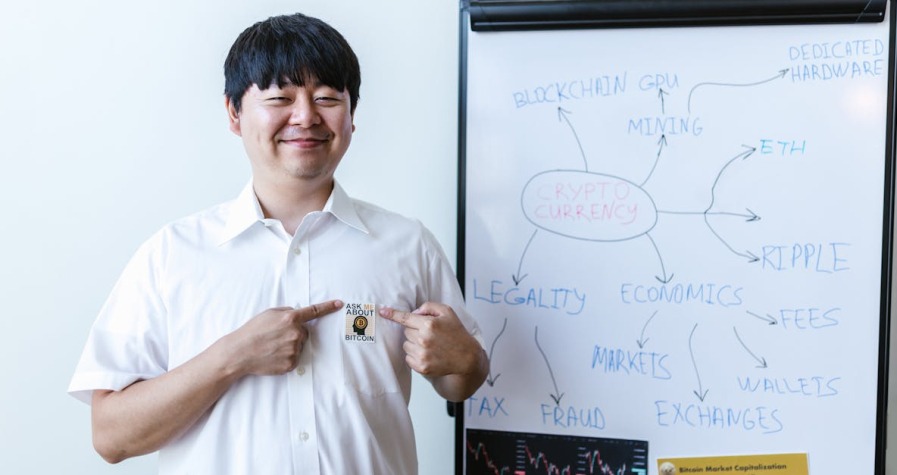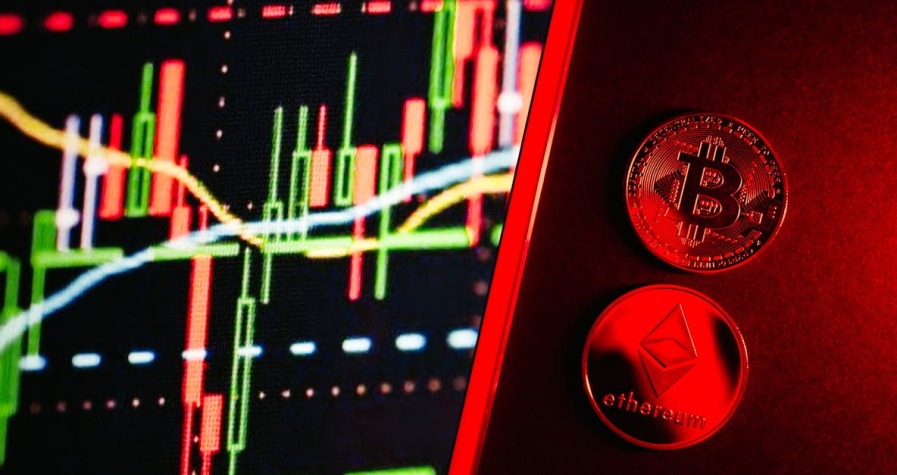With thousands of cryptocurrency projects flooding the market, you’re facing a daunting task when trying to separate genuine opportunities from elaborate scams. The crypto space has become a breeding ground for fraudulent schemes that can cost investors millions, making due diligence absolutely essential for your financial safety.
You’ll need to develop a keen eye for spotting red flags whilst identifying the hallmarks of legitimate blockchain projects. From examining whitepapers and team credentials to analysing tokenomics and community engagement, there are specific indicators that can help you make informed decisions.
Understanding these warning signs isn’t just about protecting your investment—it’s about navigating an increasingly complex digital landscape where scammers constantly evolve their tactics. By learning what separates authentic projects from sophisticated cons, you’ll gain the confidence to evaluate opportunities with clarity and precision.
Research the Team Behind the Project
Researching the development team provides crucial insights into a crypto project’s legitimacy and potential for success. A transparent team with verifiable credentials significantly increases your confidence in the project’s authenticity.
Check Team Members’ Professional Backgrounds
Examine each team member’s educational qualifications through university databases and professional networking platforms. Look for degrees from recognised institutions in computer science, mathematics, economics, or blockchain technology. MIT, Stanford, Cambridge, and Oxford graduates often appear in legitimate projects.
Verify previous work experience at established technology companies such as Google, Microsoft, IBM, or major financial institutions like Goldman Sachs, JPMorgan Chase, or Barclays. Legitimate teams frequently include former employees from these organisations.
Research prior blockchain involvement by checking if team members contributed to successful projects like Ethereum, Bitcoin Core, Chainlink, or Polkadot. Contributors to open-source repositories on GitHub demonstrate technical competence and community engagement.
Investigate published research papers on academic platforms such as arXiv, IEEE Xplore, or ResearchGate. Team members publishing peer-reviewed studies in cryptography, distributed systems, or blockchain technology show genuine expertise.
Cross-reference professional certifications from organisations like the Certified Bitcoin Professional (CBP), Blockchain Training Alliance, or relevant cybersecurity credentials from CompTIA or CISSP.
Verify Social Media Presence and Activity
Analyse LinkedIn profiles for comprehensive work histories, endorsements from colleagues, and participation in professional blockchain groups. Authentic profiles typically show years of consistent activity and industry connections.
Monitor Twitter engagement patterns by examining tweet frequency, follower interactions, and participation in technical discussions. Legitimate team members often share industry insights, engage with other developers, and maintain consistent posting schedules over months or years.
Review GitHub contributions to assess actual coding activity and repository management. Active developers show regular commits, pull requests, and collaboration on open-source projects related to blockchain technology.
Check speaking engagements at conferences such as Consensus, DevCon, Blockchain Week London, or regional meetups. Team members presenting at recognised industry events demonstrate credibility and expertise within the blockchain community.
Verify media appearances in reputable publications like CoinDesk, CoinTelegraph, Forbes Crypto, or interviews on established podcasts such as Unchained or Bankless. Legitimate teams often participate in educational content creation.
Examine cross-platform consistency by comparing information across different social media channels, ensuring biographical details, professional claims, and project involvement align consistently across platforms.
Examine the Project’s Whitepaper and Documentation
A legitimate crypto project’s whitepaper serves as the foundation for evaluating its credibility and technical viability. You’ll find that authentic whitepapers clearly articulate the project’s purpose, the specific problem it solves, and detailed use cases without excessive jargon or unrealistic promises.
Assess Technical Details and Roadmap Clarity
Technical specifications within the whitepaper reveal the project’s operational framework and implementation strategy. Look for detailed explanations of blockchain architecture, consensus mechanisms, smart contract functionality, and security protocols that demonstrate genuine technical understanding.
Key technical elements to examine:
- Blockchain infrastructure specifications and scalability solutions
- Token distribution mechanisms and smart contract auditing reports
- Integration protocols with existing systems and platforms
- Security measures including encryption methods and vulnerability assessments
The project’s roadmap must present a detailed timeline with achievable milestones and documented progress updates. Verify that technical upgrades, partnership announcements, and community growth initiatives align with realistic development phases. Projects with vague timelines or missing milestone achievements often indicate poor planning or potential deception.
Roadmap evaluation criteria:
- Quarterly development phases with specific deliverables
- Partnership integration schedules and technical implementations
- Community building targets with measurable engagement metrics
- Product launch dates supported by beta testing phases
Look for Realistic Goals and Timelines
Feasible project objectives demonstrate the team’s market understanding and technical capabilities. You can identify realistic goals by comparing proposed features with current industry standards and assessing whether the development timeline matches the complexity of stated objectives.
Realistic goal indicators:
| Goal Type | Realistic Timeline | Red Flag Timeline |
|---|---|---|
| MVP Development | 6-12 months | Under 3 months |
| Mainnet Launch | 12-24 months | Under 6 months |
| Major Partnerships | 6-18 months | Immediate claims |
| User Adoption (100k+) | 2-3 years | Within first year |
Resource allocation details within documentation show whether the project team understands the financial and technical requirements for successful implementation. Legitimate projects specify development costs, marketing budgets, and operational expenses with transparent fund utilisation strategies.
Adaptability measures in project documentation indicate long-term viability thinking. Look for contingency planning, market condition adjustments, and technology evolution responses that demonstrate strategic foresight beyond initial launch phases.
Analyse the Tokenomics and Funding Structure
Tokenomics examination forms the backbone of crypto project evaluation since it reveals how tokens function within the ecosystem and whether the economic model supports long-term sustainability. You’ll discover critical insights about project legitimacy by scrutinising monetary policies, distribution mechanisms, and funding structures.
Understand Token Distribution and Use Cases
Examine the project’s token cap table to identify how tokens are distributed amongst founders, investors, community members, and treasury reserves. Legitimate projects typically allocate 10-30% to the founding team with appropriate vesting schedules, 20-40% for public sales, and 15-25% for ecosystem development and partnerships.
Verify the token’s practical utility within the project’s ecosystem by identifying specific use cases such as:
- Governance voting for protocol decisions and upgrades
- Staking rewards that incentivise network participation
- Transaction fees for platform operations
- Access rights to premium features or services
- Payment mechanism for ecosystem products
Projects with multiple compelling use cases demonstrate stronger token demand potential compared to single-purpose tokens. Check whether the token provides meaningful benefits rather than existing purely for speculative trading purposes.
Assess the token’s competitive positioning against similar projects by comparing utility features, governance mechanisms, and economic incentives. Strong tokenomics offer unique value propositions that differentiate the project from competitors whilst addressing genuine market needs.
Review Initial Coin Offering Details
Scrutinise ICO documentation to understand how funds are raised, token pricing structures, and vesting schedules that prevent immediate token dumping by early investors. Legitimate projects implement gradual token releases over 12-48 months rather than allowing immediate access to all purchased tokens.
Evaluate the project’s treasury management strategy including:
| Treasury Component | Typical Allocation | Purpose |
|---|---|---|
| Development Fund | 15-25% | Core protocol improvements |
| Marketing Budget | 5-15% | Community growth and adoption |
| Operational Costs | 10-20% | Team salaries and infrastructure |
| Reserve Fund | 10-20% | Emergency situations and opportunities |
Examine the project’s monetary policy including total token supply caps, token burn mechanisms, and inflation schedules. Projects with clear deflationary or controlled inflationary models demonstrate economic thoughtfulness compared to those with unlimited token supplies.
Verify the project’s funding transparency by checking whether they publish regular treasury reports, development progress updates, and clear milestone achievements. Legitimate projects maintain open communication about fund usage and demonstrate accountability to their investor community through consistent reporting practices.
Investigate Community Engagement and Transparency
Community engagement and transparency reveal the true nature of crypto projects through measurable interactions and verifiable information. Legitimate projects demonstrate consistent activity across multiple platforms whilst maintaining open dialogue with their investor base.
Monitor Official Communication Channels
You can assess project legitimacy by examining their official communication platforms including websites, whitepapers, X (Twitter), Discord, Telegram and Reddit channels. Legitimate projects maintain regular content updates with technical explanations, development progress reports and clear roadmap milestones rather than purely promotional material.
Active communication channels display consistent posting schedules with substantive content addressing technical developments, partnership announcements and community concerns. Projects demonstrating transparency publish audit reports from reputable security firms, openly discuss potential vulnerabilities and provide detailed explanations of their blockchain architecture.
Your evaluation process benefits from checking communication frequency patterns – genuine projects typically post updates multiple times per week across various platforms. Look for detailed responses to technical questions, acknowledgment of criticism and willingness to address security issues publicly rather than defensive reactions.
Evaluate Response to Community Questions
Legitimate crypto projects engage meaningfully with community inquiries without censoring negative feedback or banning users for asking challenging questions. You can identify authentic projects through their constructive responses to criticism and transparent handling of concerns raised by community members.
Monitor platforms like Reddit, Bitcointalk and project-specific forums where unfiltered community discussions occur naturally. Genuine projects encourage open dialogue about technical limitations, competitive disadvantages and potential risks rather than focusing exclusively on promotional content promising unrealistic returns.
Warning signs emerge when projects delete critical comments, ban users asking legitimate technical questions or respond to inquiries with vague marketing statements. Authentic community engagement includes detailed technical explanations, acknowledgment of project limitations and honest timelines for development milestones.
You can verify community authenticity by examining discussion quality – legitimate communities debate technical aspects, governance proposals and development priorities rather than concentrating solely on price speculation and profit predictions.
Check Regulatory Compliance and Legal Standing
Regulatory compliance serves as your primary defence against fraudulent crypto projects by establishing whether the venture operates within legal frameworks. You’ll find that legitimate projects actively demonstrate adherence to KYC (Know Your Customer) and AML (Anti-Money Laundering) policies through transparent documentation and regulated partnerships.
Smart contract audits represent your most reliable indicator of project legitimacy. Reputable audit firms conduct thorough security assessments that legitimate projects prominently display on their websites. These audits reveal potential vulnerabilities and confirm code integrity before token launches. You can verify audit authenticity by cross-referencing reports directly with auditing companies like CertiK, ConsenSys Diligence, or Trail of Bits.
Custody practices distinguish professional operations from amateur ventures through secure asset handling protocols. Legitimate projects implement segregated custody solutions and provide proof-of-reserves documentation to demonstrate client fund protection. These practices include cold storage implementations, multi-signature wallet requirements, and regular attestations from certified accounting firms.
| Compliance Element | Verification Method | Red Flag Indicators |
|---|---|---|
| KYC/AML Policies | Official regulatory filings | Missing compliance documentation |
| Smart Contract Audits | Direct audit firm confirmation | Fake or outdated audit reports |
| Asset Custody | Proof-of-reserves reports | Unclear fund storage practices |
| Legal Registration | Company registry searches | Unregistered business entities |
Audit trails and immutable reporting provide transparency through timestamped transaction logs that maintain regulatory compliance standards. Projects demonstrating these capabilities offer downloadable transaction histories and real-time blockchain explorers showing fund movements. You’ll observe consistent reporting schedules and standardised financial disclosures from credible ventures.
Enhanced regulations introduced in 2025 mandate specific compliance measures that help you identify fraudulent projects earlier. These requirements include mandatory third-party audits, standardised KYC protocols, and regular regulatory reporting that legitimate projects embrace rather than resist.
Jurisdictional compliance verification involves confirming that project companies operate legally within their registered territories. You can research company registrations through official government databases and verify business licences through regulatory authority websites. Legitimate projects maintain transparent legal structures with identifiable corporate entities and registered addresses.
Regulated custody partners serve as additional verification points since established financial institutions conduct thorough due diligence before partnership agreements. Projects partnering with regulated custodians like Coinbase Custody, BitGo, or Fireblocks demonstrate commitment to institutional-grade security standards and regulatory compliance.
Review Security Audits and Code Quality
Security audits represent your primary defence against vulnerable smart contracts and potential exploits. Legitimate crypto projects commission comprehensive audits from established third-party firms like CertiK and Hacken before launching their protocols. These security specialists examine smart contract code for vulnerabilities, assess risk factors, and provide detailed recommendations for fixes.
Look for Third-Party Security Audits
Reputable projects publish complete audit reports that include vulnerability assessments and remediation evidence. You can verify audit authenticity by checking the auditing firm’s official website for confirmation. Multiple audits or follow-up reviews demonstrate ongoing security commitment and professional development standards.
Projects refusing to share audit results or claiming audits are “in progress” indefinitely raise immediate red flags. Authentic projects complete audits before token launches and update them following significant protocol changes.
Examine Code Quality and Development Activity
Open-source code availability on GitHub allows independent verification of project claims and technical capabilities. Active development shows through regular code commits, multiple contributors, and comprehensive documentation updates.
| Code Quality Indicators | What to Look For |
|---|---|
| Commit Frequency | Weekly or daily updates during active development |
| Contributors | 3+ active developers with verified profiles |
| Documentation | Complete setup guides and API references |
| Code Reviews | Multiple reviewers approving changes before merging |
Well-maintained repositories feature clear README files, detailed installation instructions, and active issue tracking. Poor documentation or abandoned repositories indicate development problems or potential exit scam preparation.
Assess Development Team Transparency
GitHub profiles reveal developer experience through contribution history and project involvement. Experienced developers maintain consistent activity patterns and contribute to multiple blockchain projects over extended periods.
Cross-reference team member GitHub accounts with LinkedIn profiles to verify claimed experience. Legitimate developers showcase their work openly and engage with the broader blockchain community through conferences and technical discussions.
Missing or private repositories from claimed team members suggest fabricated credentials or inadequate technical capabilities. Authentic projects feature developers who actively participate in code reviews and respond to community technical questions.
Assess Partnerships and Exchange Listings
Partnerships and exchange listings provide critical indicators of a crypto project’s credibility within the broader blockchain ecosystem. Legitimate projects demonstrate measurable relationships with established companies and secure positions on reputable trading platforms.
Verify Partnership Claims Through Official Sources
Cross-reference all partnership announcements by checking official confirmation from both parties involved. Authentic partnerships appear on the partner company’s official website, press releases, or verified social media channels. Contact partner companies directly through their official communication channels if verification remains unclear.
Examine partnership depth beyond surface-level announcements. Genuine collaborations involve specific deliverables, shared resources, or integrated technical solutions. Projects displaying vague partnership descriptions such as “strategic alliance” or “collaboration” without concrete details often fabricate these relationships.
Monitor partnership timelines for consistency with project development phases. Legitimate partnerships align with natural business progression and demonstrate mutual benefit structures. Fraudulent projects frequently claim partnerships with major corporations like Microsoft, Google, or Amazon without providing verifiable evidence.
Evaluate Exchange Listing Quality and Reputation
Focus on exchanges with established regulatory compliance and rigorous project vetting procedures. Tier-1 exchanges including Binance, Coinbase, Kraken, and Bitfinex implement comprehensive due diligence processes before listing new tokens. These platforms reduce investment risk through thorough background checks and ongoing monitoring.
| Exchange Tier | Examples | Vetting Process |
|---|---|---|
| Tier 1 | Binance, Coinbase, Kraken | Extensive legal review, technical audits |
| Tier 2 | KuCoin, Gate.io, Huobi | Moderate screening procedures |
| Tier 3 | Smaller DEXs, Unknown platforms | Minimal or no verification |
Investigate listing requirements and fees for different exchange categories. Reputable exchanges charge substantial listing fees ranging from £50,000 to £500,000, demonstrating the project’s financial commitment and legitimacy. Projects listed exclusively on obscure or newly created exchanges raise immediate red flags.
Analyse Partnership Integration and Technical Implementation
Review technical documentation revealing how partnerships integrate into the project’s core functionality. Legitimate partnerships involve code repositories, API integrations, or shared infrastructure components visible through development channels. Superficial partnerships lack technical substance and implementation evidence.
Assess partnership duration and renewal patterns across the project’s history. Established projects maintain long-term relationships spanning multiple years with gradual expansion of collaboration scope. Short-lived partnerships or frequent partner changes suggest underlying issues with project management or legitimacy.
Examine mutual marketing efforts and co-branded initiatives between partners. Authentic partnerships feature joint marketing campaigns, shared conference appearances, and collaborative content creation. One-sided promotional activities where only the crypto project mentions the partnership indicate fabricated relationships.
Monitor Exchange Performance and Trading Metrics
Track trading volume patterns across different exchanges to identify artificial manipulation. Legitimate projects demonstrate consistent trading activity with natural volume fluctuations. Suspicious projects show concentrated trading on single exchanges with irregular volume spikes suggesting wash trading activities.
Compare token pricing consistency across multiple exchanges to detect market manipulation. Significant price discrepancies between platforms indicate low liquidity or coordinated trading schemes. Legitimate projects maintain relatively stable pricing across established exchanges within normal arbitrage ranges.
Conclusion
Your investment success in cryptocurrency depends entirely on your ability to distinguish legitimate projects from elaborate scams. The digital asset landscape remains challenging but following these verification methods will significantly improve your decision-making process.
Remember that scammers constantly evolve their tactics so staying informed about new red flags is essential. Always prioritise projects that demonstrate transparency accountability and genuine technological innovation over those promising unrealistic returns.
Trust your instincts when something feels too good to be true. Thorough research takes time but it’s far better than losing your hard-earned money to sophisticated fraudsters who prey on eager investors.
Take action methodically verify every claim and never invest more than you can afford to lose. Your financial security depends on the quality of your due diligence efforts.
Frequently Asked Questions
What are the key red flags to watch for when evaluating crypto projects?
Major red flags include anonymous teams with unverifiable credentials, poorly written whitepapers lacking technical details, unrealistic promises of guaranteed returns, and lack of transparency in communication. Projects that delete critical comments, avoid answering technical questions, or refuse to share audit reports should be avoided. Additionally, watch for excessive founder token allocations and vague roadmaps without achievable milestones.
How can I verify the legitimacy of a crypto project’s development team?
Research team members’ professional backgrounds, educational qualifications, and previous work experience at established technology companies. Verify their social media presence and GitHub contributions. Check if they’ve participated in industry conferences or made media appearances. Cross-reference their claimed experience with their actual online activity and ensure their profiles are consistent across platforms.
What should I look for in a crypto project’s whitepaper?
A legitimate whitepaper should clearly articulate the project’s purpose, the specific problem it solves, and detailed use cases. Look for comprehensive technical details including blockchain architecture, consensus mechanisms, and security protocols. The roadmap should present achievable milestones with documented progress updates. Avoid projects with vague explanations, unrealistic timelines, or copied content from other projects.
How do I evaluate a project’s tokenomics structure?
Examine token distribution to ensure reasonable allocations between founders, public sales, and ecosystem development. Verify that founder tokens have appropriate vesting schedules to prevent immediate dumping. Assess the token’s practical utility through specific use cases like governance voting, staking rewards, or transaction fees. Check the total supply cap, inflation schedules, and compare the economic model with similar successful projects.
What role does community engagement play in project legitimacy?
Legitimate projects maintain active, transparent communication across multiple platforms and engage meaningfully with their community. They provide regular substantive updates, address concerns constructively, and encourage open dialogue about technical limitations. Warning signs include deleting critical comments, banning users for challenging questions, or providing only superficial responses to community inquiries.
Why are security audits important for crypto projects?
Security audits from reputable third-party firms verify code quality and identify potential vulnerabilities. Legitimate projects publish comprehensive audit results that are publicly verifiable. Projects that refuse to share audit reports, claim audits are perpetually “in progress”, or haven’t undergone professional security reviews pose significant risks. Multiple audits from different firms provide additional assurance.
How can I assess the quality of a project’s exchange listings?
Focus on tier-1 exchanges that implement rigorous vetting processes rather than numerous low-quality listings. Verify trading metrics across exchanges to identify potential market manipulation. Look for consistent trading activity and stable pricing patterns. Quality exchanges typically require comprehensive due diligence before listing, making their approval a positive indicator of project legitimacy.
What regulatory compliance factors should I consider?
Legitimate projects adhere to KYC (Know Your Customer) and AML (Anti-Money Laundering) policies. They operate within legal frameworks of their jurisdictions and maintain transparent reporting practices. Look for partnerships with regulated custody providers, published audit trails, and compliance with enhanced 2025 regulations. Projects avoiding regulatory clarity or operating in legal grey areas carry additional risks.









